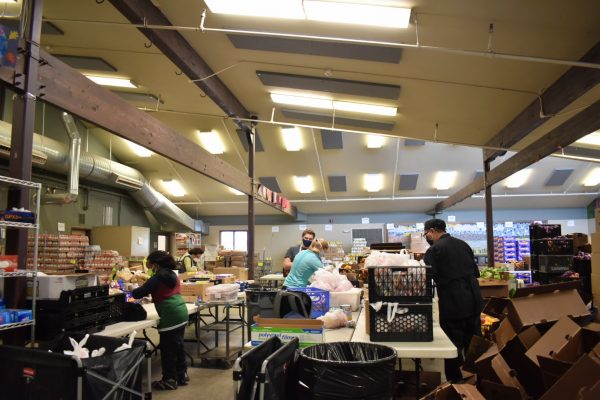
Anchorage soup kitchen Bean’s Cafe received a Christmas surprise after a tractor-trailer overturned and spilled groceries into a ditch on the Glenn Highway on Christmas Eve: about 30,000 pounds of fresh produce and meat.
The food was deemed no longer fit for retail, but the towing company helped salvage what they could for the kitchen, says Bean’s executive director Lisa Sauder.
“To have basically half of a refrigerated truck full of produce is quite something this time of year. So we’re working really hard right now to make sure we process it and put it up so that we will have a lot of it for down the road.”
The Dena’ina Center offered refrigerator space for the salvaged food. Sauder said the towing company, Bean’s and Dena’ina Center staff, and even the tractor trailer driver worked to collect and store the food the night before Christmas.
Some of the food will be processed, preserved or frozen to keep for a few weeks, but right now Sauder says it’s extra special to be able to offer fresh food such as salad greens, strawberries and clementines in winter, particularly in the middle of a pandemic.
“It’s a real treat for many people in Alaska, especially those right now that are struggling, many for the first time ever, with trying to figure out how to feed themselves and their families.”
Between an emergency mass shelter and a few other sites, Bean’s Cafe is feeding hundreds of people a day. Monday night, Sauder says the count was more than 700. She expects the surprise fresh food delivery to last through January.
Kavitha George is Alaska Public Media’s climate change reporter. Reach her at kgeorge@alaskapublic.org. Read more about Kavitha here.





